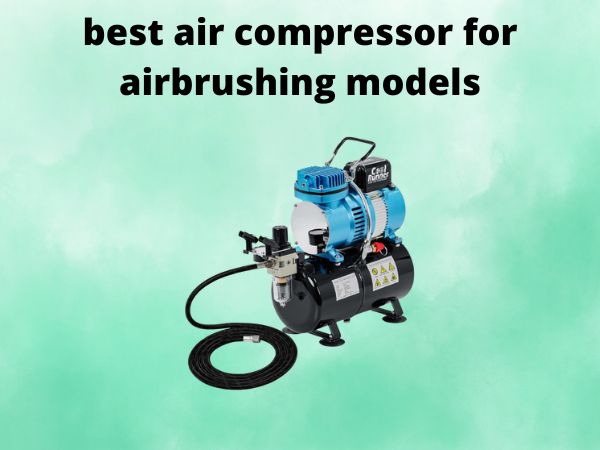How Often to Drain Air Compressor Tank for Best Performance
As an avid DIYer and home improvement enthusiast, I’ve come to rely on my trusty air compressor for a wide range of projects. Whether I’m inflating tires, powering pneumatic tools, or even running a small paint sprayer, this versatile piece of equipment has become an indispensable part of my workshop. However, one aspect of air compressor maintenance that I’ve learned is crucial is the regular draining of the tank. In this article, I’ll dive into the importance of this task and share my insights on how often you should be draining your air compressor tank to ensure peak performance and longevity.
Table of Contents
Why Draining the Air Compressor Tank Matters
You might be wondering, “Why do I even need to drain my air compressor tank in the first place?” It’s a great question, and the answer lies in the very nature of how an air compressor works. As the compressor runs, it draws in air from the surrounding environment and compresses it, storing the high-pressure air in the tank. However, this compressed air also carries with it tiny droplets of water and other condensation that can accumulate over time.
Left unchecked, this buildup of moisture can lead to a host of problems. The water can corrode the internal components of the compressor, potentially causing leaks, rust, and even complete failure of the system. Additionally, the presence of water in the tank can reduce the overall air quality, leading to issues with the tools and equipment you’re powering.
Factors That Influence Draining Frequency
So, how often should you be draining your air compressor tank? The answer isn’t a one-size-fits-all solution, as there are several factors that can influence the recommended frequency:
Usage Frequency
The more you use your air compressor, the more often you’ll need to drain the tank. If you’re running the compressor for extended periods of time or using it daily, you’ll want to drain the tank more frequently than someone who only uses it occasionally.
Ambient Humidity
The humidity level in your workshop or garage can also play a role. In areas with high humidity, the compressor will naturally accumulate more condensation, requiring more frequent draining.
Tank Size
Larger air compressor tanks tend to accumulate more moisture over time, so they may need to be drained more often than smaller tanks.
Recommended Draining Frequency
With these factors in mind, here are some general guidelines for how often you should be draining your air compressor tank:
- Light-Duty Use: If you only use your air compressor occasionally, such as for inflating tires or running a few pneumatic tools, aim to drain the tank at least once a month.
- Heavy-Duty Use: For those who use their air compressor more frequently, such as for daily workshop tasks or running power tools, consider draining the tank at least once a week.
- High-Humidity Environments: In humid climates or areas with high moisture levels, you may need to drain the tank even more often, perhaps every few days or even daily during periods of heavy use.
It’s also worth noting that some air compressors come equipped with automatic draining systems or electronic sensors that can detect when the tank needs to be drained. If your compressor has these features, be sure to follow the manufacturer’s recommendations for maintenance and draining intervals.
How to Properly Drain the Air Compressor Tank
Draining the air compressor tank is a relatively straightforward process, but it’s important to do it correctly to ensure the longevity and performance of your equipment. Here are the steps to follow:
- Turn off the air compressor and unplug it from the power source to ensure safety.
- Locate the drain valve, which is typically located at the bottom of the tank.
- Place a collection container, such as a bucket, beneath the drain valve to catch the water and condensation.
- Slowly open the drain valve, allowing the compressed air and accumulated moisture to escape. Be careful, as the air may be cold and the water may be hot.
- Once the tank is fully drained, close the valve and wipe away any excess moisture or debris around the drain area.
- Restart the compressor and allow it to reach full pressure before resuming use.
Conclusion
Regularly draining your air compressor tank is a simple yet essential maintenance task that can significantly improve the performance and lifespan of your equipment. By understanding the importance of this process and following the guidelines I’ve outlined, you can keep your air compressor running at its best, whether you’re tackling DIY projects, powering pneumatic tools, or inflating tires. Remember, a well-maintained air compressor is a valuable asset in any workshop or garage, so don’t neglect this crucial step in your routine maintenance routine.
FAQs
How do I know if my air compressor tank needs to be drained?
There are a few signs that indicate it’s time to drain your air compressor tank: visible water or condensation in the tank, reduced air pressure or output, and the compressor running more frequently than usual. If you notice any of these, it’s a good idea to drain the tank.
Can I over-drain my air compressor tank?
It’s unlikely that you can over-drain the tank, as the compressor will automatically refill it with air once the pressure drops. However, draining the tank too frequently can lead to unnecessary wear and tear on the components, so it’s best to follow the recommended intervals based on your usage and environmental factors.
What happens if I don’t drain the air compressor tank?
If you neglect to drain the air compressor tank, the accumulated moisture can cause a variety of problems, including corrosion of internal parts, reduced air quality, and even complete system failure. Regularly draining the tank is an essential maintenance task to ensure the long-term performance and reliability of your air compressor.
Can I drain the tank while the compressor is running?
It’s generally not recommended to drain the air compressor tank while the unit is running. This can introduce air leaks and potentially damage the compressor. It’s best to turn off the compressor, unplug it, and then drain the tank following the proper safety procedures.
How do I dispose of the water and condensation drained from the tank?
The water and condensation drained from the air compressor tank should be disposed of properly, following any local regulations or environmental guidelines. In most cases, you can simply pour the contents into a suitable container and dispose of it along with your regular household waste.




